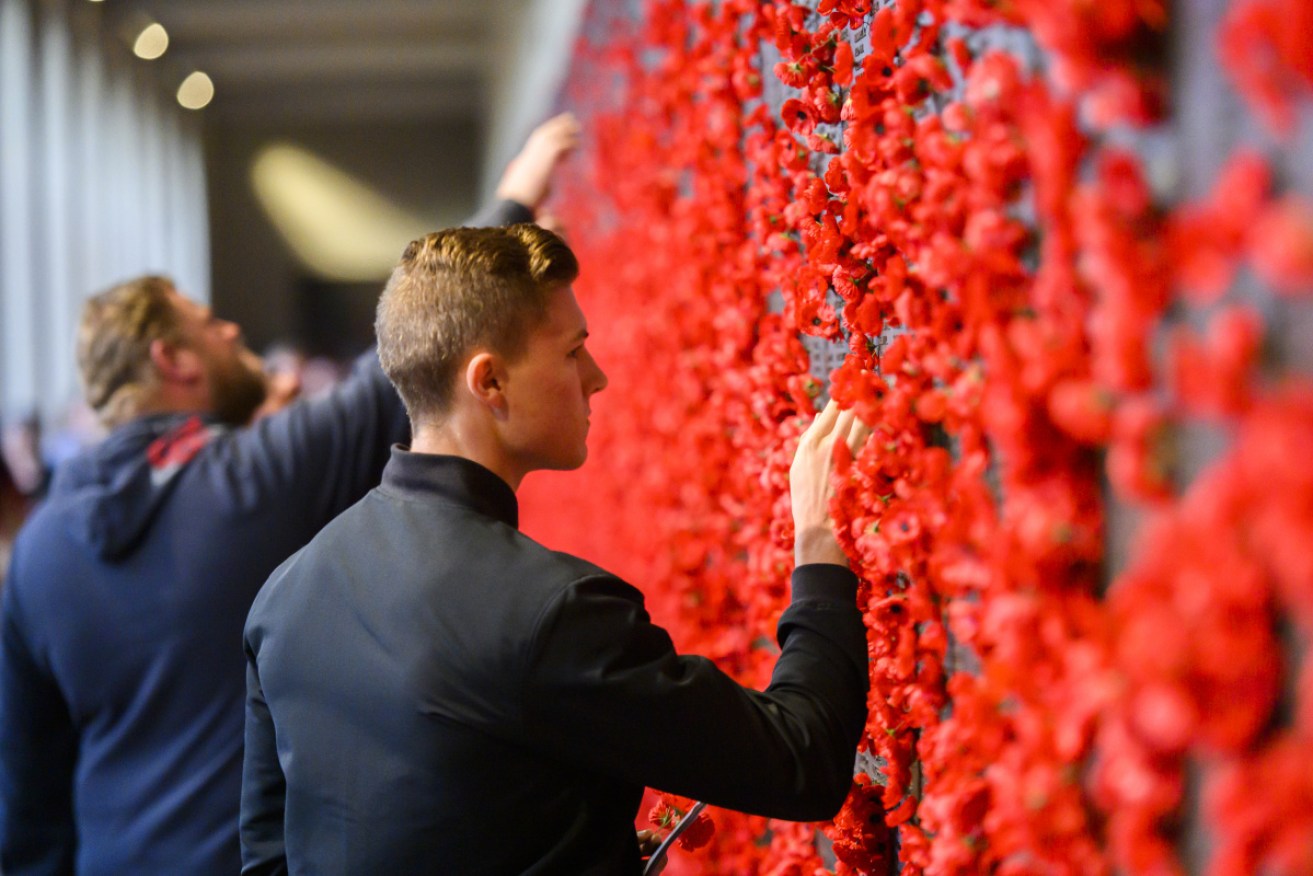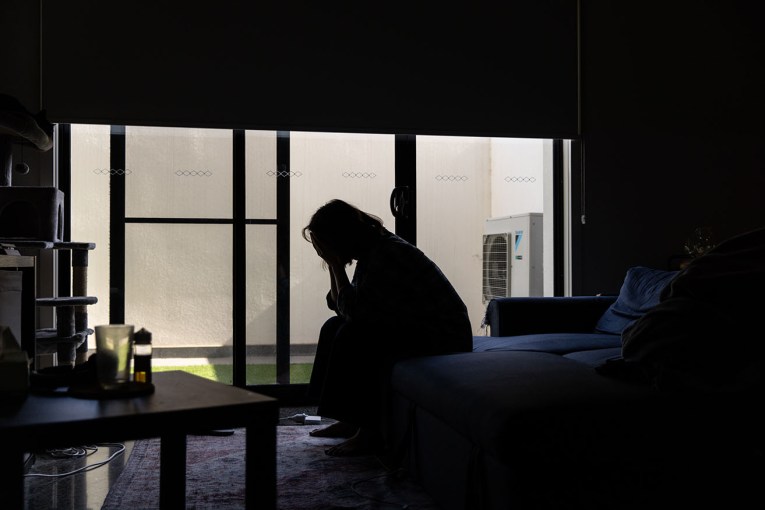Surprising Australian sites that honour the sacrifice of our fallen war heroes


There will be no public services held on Anzac Day due to the coronavirus. Photo: Getty
When we think of war memorials, we usually envisage a giant monolithic structure, not the 242-kilometre stretch of asphalt that is Victoria’s Great Ocean Road, let alone a bus stop, tree stump or water tower.
There are thousands of plaques across the country that bear the names of those who made the ultimate sacrifice for us.
There’s also an array of non-traditional memorials, that pay tribute to these heroes in their own unique ways.
The New Daily has delved into four unknown to many. They might take you by surprise.
The Great Ocean Road

Photo: Lorne Historical Society
More than 3000 ex-soldiers who returned home from deployment in World War I were paid 10 shillings and sixpence a day (equivalent to just over a dollar) to help build what we now call the Great Ocean Road in Victoria.
The job, which some spent 10 years on, was so “extremely arduous” that “in this day and age, the road wouldn’t have been built given the conditions they had to work in”, said Peter Spring, vice president of the Lorne Historical Society.
Yet it helped rehabilitate them back into society, much better than how veterans are nowadays assisted in their transition to civilian life, Mr Spring said.
Work started on September 19, 1919, barely 10 months after the Great War officially ended.

Photo: Lorne Historical Society
The only major difference between the war zone they had left and the “military-style environment” they entered was that no-one was shooting at them, Mr Spring said.
“So, it was a familiar environment of command and control and camaraderie,” he explained.
Tying a rope around their waist and to the limb of a tree, they dangled off high cliffs which they repeatedly hacked at using only hand tools.
They sometimes used explosives to blast through huge chunks of rock and cause part of the cliff structure to collapse, raising concern for the state of mind of returned soldiers who had post-traumatic stress disorder and were suffering from shell-shock. But they pressed on regardless.
“No-one died. There was one suicide but that’s all,” Mr Spring said.

Photo: Lorne Historical Society
It took about 13 years for works to be completed.
Almost nine decades later and the Great Ocean Road, which starts at Torquay and ends in Allansford, is well known as a tourist hotspot.
Not so well known is the fact that the road is recognised as the world’s longest war memorial.
Bus stop memorials
Two bus stops that commemorate those who served in World War I and the Vietnam War are doing a lot to educate children about history so that the Anzac phrase ‘lest we forget’ holds true and trickles down to younger generations.
Vietnam veteran Peter Ramsay explained how the bus stops, near a primary school in Perth, evoked a question from a year 6 student that adults rarely ask returned servicemen and women.

Photo: Friends of ANZAC Cottage Inc
Every day, students from Mount Hawthorn primary school would bring lunch to the veteran soldiers involved in revamping the worn-down stops using materials that were common to both wars. They were sandbags (containing cement), corrugated iron and timber.
“Those kids, although they’re only year 6, asked some really incredible questions,” said Mr Ramsay, who instigated the project.
“One question particularly was, ‘Did you find it hard when you came back to your home?’ And that’s a question that’s never really asked by adults.
“I’ve been out now since 1970. Have I really transitioned? Probably not.”
A hand-painted mural taken from a poster made in World War I, calling for people to enlist, is displayed on one of the Mount Hawthorn stops.

Photo: Friends of ANZAC Cottage Inc
And as people wait for the bus they can test themselves to see what military jargon they know. On the back of each of the stops are ‘slang’ terms from each of the conflicts. They must go onto the Anzac Cottage website to discover their true meaning.
Anzac Cottage, which is located on Kalgoorlie street where one of the stops is, was built by Mount Hawthorn citizens for a returned, wounded soldier who served at Gallipoli. That soldier was Anne Chapple’s grandfather. She is secretary of the Friends of Anzac Cottage Inc.
Ms Chapple said the bus stops are “a commemoration and a remembrance that people can access without any issues whatsoever, every day”.

Photo: Friends of ANZAC Cottage Inc
Carved memorial trees
Along the main road in the Tasmania town of Legerwood are seven trees that were planted at the end of World War I to honour the seven resident soldiers who were killed in combat.
About 83 years later, in 2001, the trees were deemed a safety risk and due to be cut down, until two women descended from the soldiers started a campaign to save them.
No-one else at the time knew the trees’ significance; the signs originally attached to them had long disappeared.
After they stirred up a fuss, locals came up with a solution to get them chainsaw-carved into the seven fallen soldiers from Legerwood.

Photo: Places of Pride
“People come from all over the world now to honour those soldiers. Whereas if the trees had just been cut down, they would have been forgotten,” said Cindy Walsh, secretary of the Legerwood Hall and Reserves Committee.
Alan Andrews, a 19-year-old born and bred in Legerwood, was the youngest out of the seven who were killed.
He was carved waving his hat in the direction of his mum’s farm and with his dog by his side.

Alan Andrews. Photo: Places of Pride
Thomas Edwards worked at a local sawmill and was killed in action at age 35.
“When he passed away, his friend was by his side and he asked his friend to go home and look after his wife. And in later years, his best friend ended up marrying his wife,” Ms Walsh said.
William Hyde also worked in the local sawmill. He was 27 years old when he was killed.
Then there was Robert Jenkins.
“People around here didn’t know why a man who was born in England had a tree planted in Legerwood for him but he was actually working in the local sawmill too,” Ms Walsh said.
“And he was engaged to a local girl … She always had a photo of Bobby sitting on the dressing table beside the engagement ring.”
He died at 28 and was never able to marry his fiancée.
John McDougall worked at a railway station right beside where the trees where planted. He was 20 when he was killed.

William Hyde. Photo: Places of Pride
Then there was George Peddle who died at age 25. His dad owned the town sawmill where five of the men worked.
“His father had written that he could … turn his hand to any job as he was needed,” Ms Walsh said.
Lastly, there was John Riseley. He died of shrapnel wounds at age 35.
“After we got the tree carved, we had some of his family come up from Shipwrights Point in Tasmania, and they were so pleased we put up a memorial for him because they thought he’d pretty much been forgotten,” Ms Walsh said.
Legerwood, as a town, wasn’t even named when these men went to war.
Water Tower museum
There are two four-storey murals of the Vietnam War on the outside of a water tower-turned-museum. It was built in 1910 and served as the first-ever reserve water supply for Gunnedah in New South Wales.
One of the paintings is of a memorial that was built in Vietnam after the Battle of Long Tan, which killed 17 Australians and wounded 25 others.

Photo: Penny Smith
Bob Leister was behind the idea. At the time he was excused from military service because he was a mechanic and deemed to be working at an essential service.
“The Defence Department in their wisdom thought I’d be better off repairing Caterpillar tractors, bulldozers and grazers then blowing them up,” said Mr Leister, president of the Gunnedah Historical Society.
“I was disappointed at the time but after we started to get reports of the various battles … I was quite relieved then.”
The second painting on the old water tower is of soldiers about to board a helicopter.
One of the men featured was a Gunnedah local named Peter Capp who served time in Vietnam.

Photo: Museums & Galleries of NSW
He was one of the few Gunnedah residents who did not get killed in combat during that war, Mr Leister said.
The painting is also featured in the Australian War Memorial in Canberra.
“It had a local factor and a local story. And the same as the other photo of the war memorial. We had some Gunnedah people in that battle,” Mr Leister said.
As for why the paintings are focused on the Vietnam war, he said: “there didn’t seem to be any or very much around that was focusing on Vietnam … and we thought Vietnam was important enough in people’s memories to have it”.








